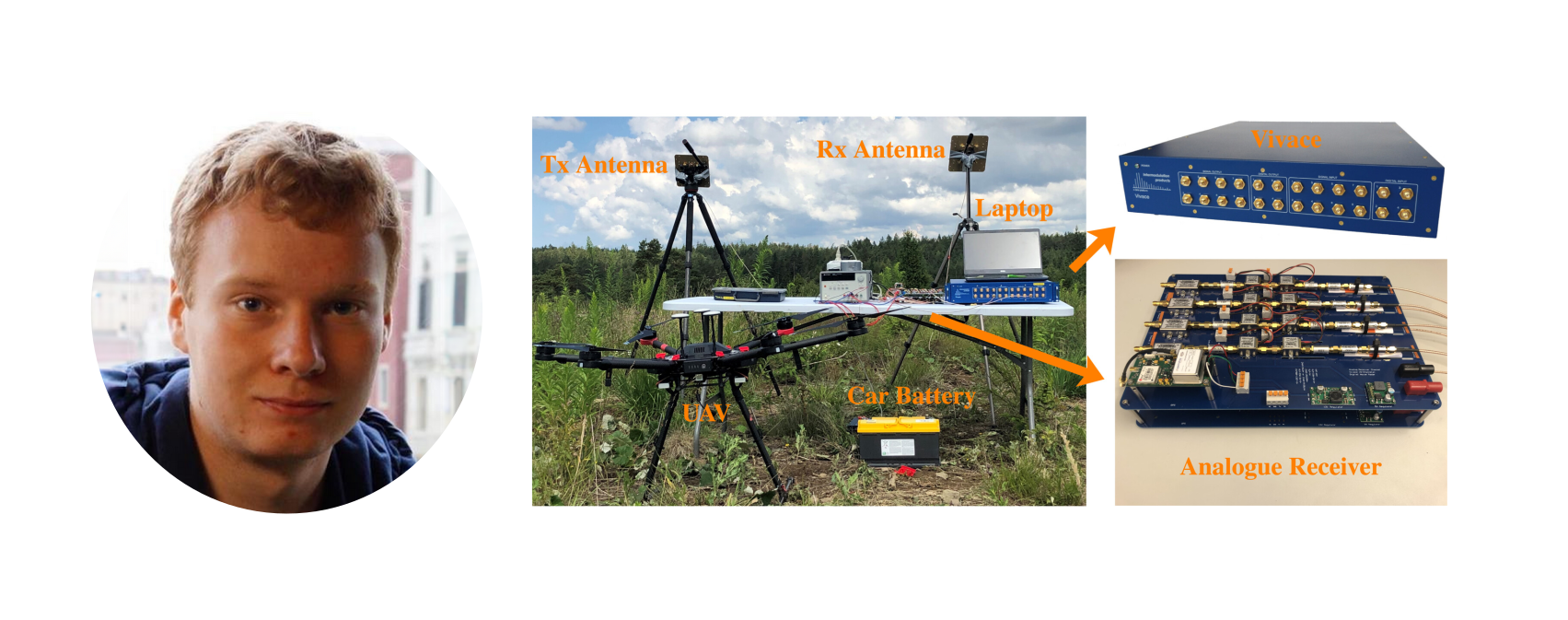Noise radar
 Martin Ankel, industrial PhD student at SAAB and Chalmers University of Technology, Sweden and the real-time noise radar measurement setup. The ''brain'' of the radar is Vivace. It generates the noise signal that is transmitted via the tx antenna and gets reflected off of the UAV. The reflected signal is received by the rx antenna, then amplified and filtered by the analog receiver board to be sampled and analyzed in real-time by Vivace. The analyzed data reveals the distance and velocity of the UAV, which is visualized on a computer.
Martin Ankel, industrial PhD student at SAAB and Chalmers University of Technology, Sweden and the real-time noise radar measurement setup. The ''brain'' of the radar is Vivace. It generates the noise signal that is transmitted via the tx antenna and gets reflected off of the UAV. The reflected signal is received by the rx antenna, then amplified and filtered by the analog receiver board to be sampled and analyzed in real-time by Vivace. The analyzed data reveals the distance and velocity of the UAV, which is visualized on a computer.
Introduction:
I am an industrial PhD student at SAAB and Chalmers University of Technology. My project is supervised by Prof. Per Delsing, Prof. Lars Ulander, and Dr. Tomas Bryllert. My research goal is the practical implementation of a noise radar system, with the ultimate aim of constructing a high bandwidth bistatic noise radar system, that operates in real-time and is capable of detecting an unmanned aerial vehicle (UAV) at a range of several kilometers, i.e., a technology readiness level (TRL) 7 demonstration.
Demonstration of the real-time noise radar:
The Vivace, thanks to easy implementation of custom FPGA code, has been an integral part of several of the performed proof-of-concept experiments. In combination with the excellent customer support from IMP, the Vivace is also perfectly suitable for the implementation of an FPGA-based noise radar processor. Thanks to Vivace, we were able to implement a real-time noise radar processor. It is capable of operating with a 100% duty cycle, 200 MHz bandwidth, and 268 ms integration time while processing a range of about 8.5 km. The current system lacks in detection range due to the masking effect. We believe we can solve this by considering a bistatic system and utilizing all of Vivace's available channels to perform spatial filtering.
Conclusion:
In conclusion, Vivace has been an indispensable asset in implementing the real-time noise radar. I would highly recommend Vivace and IMP to anyone.